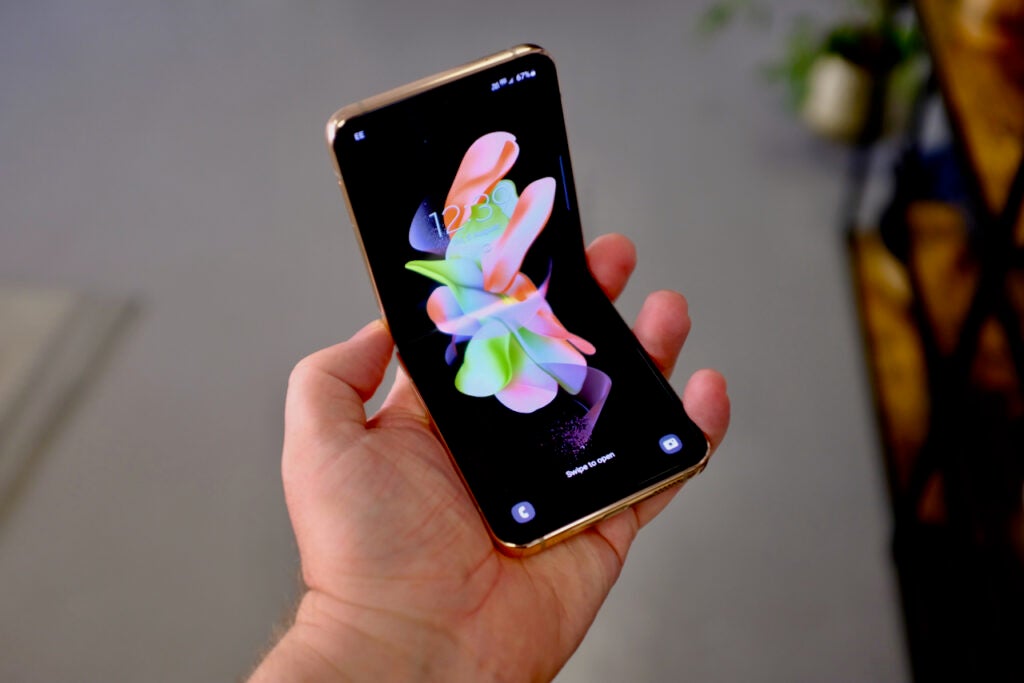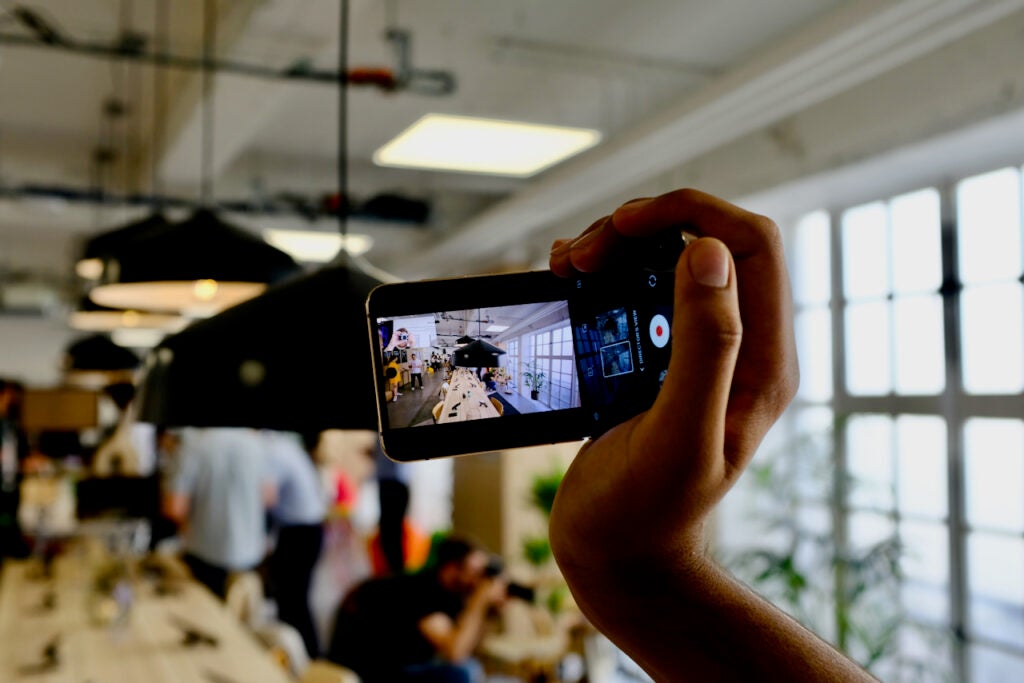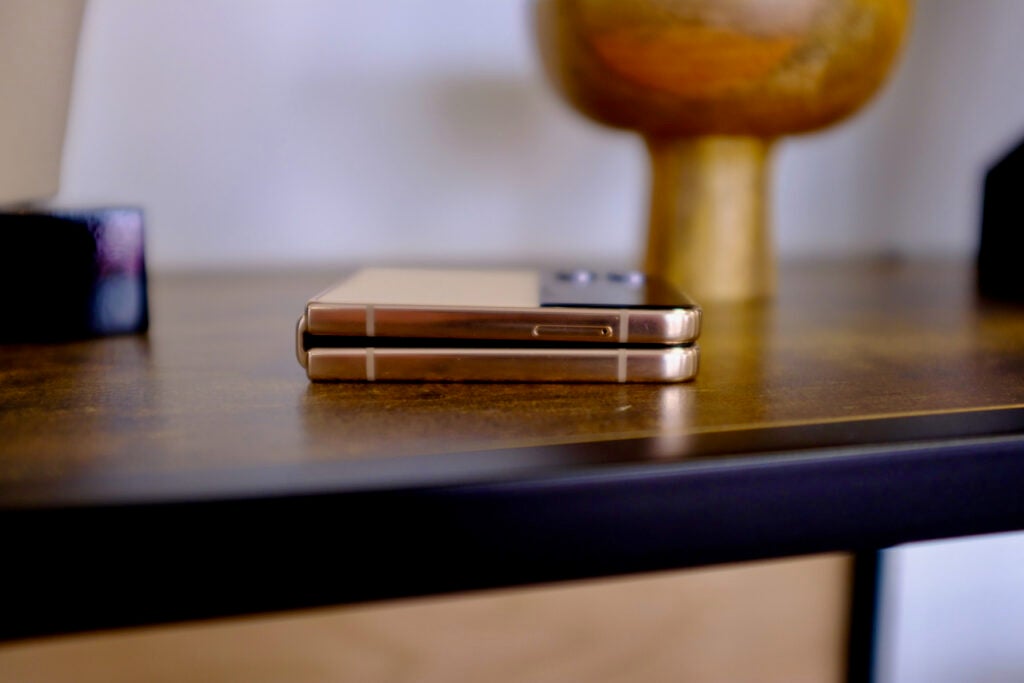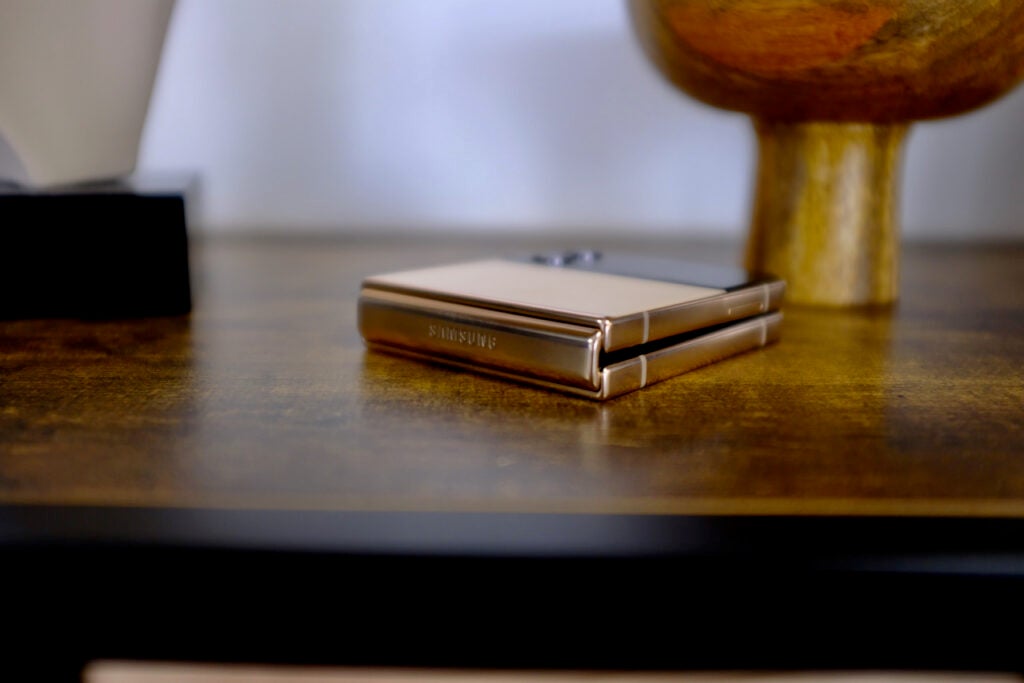The Samsung Galaxy Z Flip 4 is the Korean brand’s latest attempt to recreate the flip phone by melding together a futuristic foldable screen with retro charm.
-
Handy Cover ScreenOuter 1.9-inch display for notifications, shortcuts and quick settings -
Foldable inside displayInner display folds out to reveal a 6.7-inch screen -
Various customisation optionsFour base colours, plus Samsung’s Bespoke service for more customisation
Introduction
While the Z Fold 4 is Samsung’s way to really smartphone tech forward, I have always preferred the more modest Flip line.
Instead of using a folding screen to turn a smartphone into a tablet, the Flip uses it to turn the 6.7-inch device into one of the most pocketable smartphones around.
The original iteration had its fair share of issues, as did the follow-up, but Samsung really hit its stride with the Z Flip 3. After spending a couple of hours ahead of launch with the latest model, it seems that Samsung’s positive trajectory is continuing.

Screen and Design
The Z Flip 4, like the Z Fold 4, doesn’t stray too much from the blueprint set by its predecessors. Instead, Samsung has added a smattering of design upgrades to hopefully make it a better overall device.
The bezels, for instance, around the inner display are slimmer and the functionality of the cover screen (that’s the small display on the outside) has been expanded to allow you to do more without unfurling the phone.
For instance, there’s more customisation on this outer screen with themes that run across the software – something that was oddly missing before. You can also access quick settings without opening the phone, with shortcuts to Wi-Fi settings and Airplane mode added.
Samsung is clearly using this Cover Screen as a key selling point, positioning the phone as a device that doesn’t always push you to fully interact with it all the time. The Cover Screen is a bit like a smartwatch – giving you glanceable information that doesn’t require your full attention.

Samsung isn’t just leaning into customisation on the software, but with the actual hardware too. It’s bringing its Bespoke service back, allowing you to expand beyond the four generic colours. You can tweak the front and back respectively, along with the rim to create a very personal device.
The inner display remains very much the same as the one you’ll find on the Flip 3. It’s a 6.7-inch OLED panel, with a 2460 x 1080 resolution and a 120Hz refresh rate. The middle crease remains too, though it’s far less visible (and annoying) than on the Z Fold 4 I tried alongside it.

Specs and Features
The Z Flip 4 is far less about the specs and features than the Z Fold 4, with the focus here more on the nostalgic form factor. That’s not to say there’s not a range of high-end specs included, though.
Powering the phone is the Snapdragon 8 Plus Gen 1 chip. This is Qualcomm’s latest chip and we’ve been impressed with its performance when reviewing other phones, like the OnePlus 10T.
There’s a 3700mAh battery (up from 3300mAh in the previous Flip) which should hopefully avoid some of the endurance issues, fast wired and wireless charging and three cameras. A 10MP sensor sits inside the phone, while there’s a 12MP wide and 12MP ultra wide on the outside. Samsung claimed low-light performance has seen a big improvement this time around – though we’ll have to put this to the test in our full review.
As is the case with the Z Fold 4, a lot of the improvements here are software based. Samsung has padded out the feature-set of its Flex mode, allowing you to do neat tricks by half folding the phone. You can, for instance, hold the phone like a camcorder to record video or have the lower portion of the screen turn into a trackpad for scrubbing through a video. Samsung also claimed apps not fully supported by Flex mode will be better now, though again we’ll need to put this to the test.

First impressions
It’s a year of smaller updates for the Z Flip series, finessing an already very good device rather than rethinking it. The low-light improvements to the camera are welcome, as is the bigger battery and bigger focus on the outer display. I’ll be excited to see how it performs during more thorough testing when I get my final review unit in.
Jargon buster
OLED
Organic Light Emitting Diode is panel technology that allows each individual pixel to produce light rather than relying on a backlight. This enables the screen to accurately display blacks by turning off the pixel, resulting in improved contrast compared to conventional LCD panels.
IP rating
An abbreviation for ‘Ingress Protection Code’, which lets you know to what extent a device might be waterproof or dustproof.
















